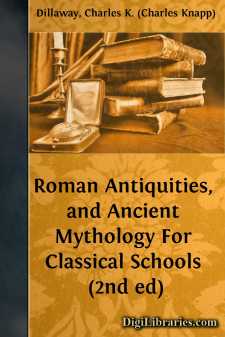Categories
- Antiques & Collectibles 13
- Architecture 36
- Art 48
- Bibles 22
- Biography & Autobiography 813
- Body, Mind & Spirit 142
- Business & Economics 28
- Children's Books 16
- Children's Fiction 13
- Computers 4
- Cooking 94
- Crafts & Hobbies 4
- Drama 346
- Education 46
- Family & Relationships 57
- Fiction 11829
- Games 19
- Gardening 17
- Health & Fitness 34
- History 1377
- House & Home 1
- Humor 147
- Juvenile Fiction 1873
- Juvenile Nonfiction 202
- Language Arts & Disciplines 88
- Law 16
- Literary Collections 686
- Literary Criticism 179
- Mathematics 13
- Medical 41
- Music 40
- Nature 179
- Non-Classifiable 1768
- Performing Arts 7
- Periodicals 1453
- Philosophy 64
- Photography 2
- Poetry 896
- Political Science 203
- Psychology 42
- Reference 154
- Religion 513
- Science 126
- Self-Help 84
- Social Science 81
- Sports & Recreation 34
- Study Aids 3
- Technology & Engineering 59
- Transportation 23
- Travel 463
- True Crime 29
Roman Antiquities, and Ancient Mythology For Classical Schools (2nd ed)
Categories:
Description:
Excerpt
CHAPTER I.
Foundation of Rome and Division of its Inhabitants.
Ancient Italy was separated, on the north, by the Alps, from Germany. It was bounded, on the east and north-east, by the Adriatic Sea, or Mare Superum; on the south-west, by a part of the Mediterranean, called the Tuscan Sea, or Mare Inferum; and on the south, by the Fretum Siculum, called at present the strait of Messina.
The south of Italy, called Græcia Magna, was peopled by a colony from Greece. The middle of Italy contained several states or confederacies, under the denominations of Etrurians, Samnites, Latins, Volsci, Campanians, Sabines, &c. And the north, containing Gallia Cisalpina and Liguria, was peopled by a race of Gauls.
The principal town of the Latin confederacy was Rome. It was situated on the river Tiber, at the distance of sixteen miles from its mouth.
Romulus is commonly reported to have laid its foundations on Mount Palatine, A. M. 3251, B. C. 753, in the third year of the 6th Olympiad.
Rome was at first only a small fortification; under the kings and the republic, it greatly increased in size; but it could hardly be called magnificent before the time of Augustus Cæsar. In the reign of the Emperor Valerian, the city, with its suburbs, covered a space of fifty miles; at present it is scarcely thirteen miles round.
Rome was built on seven hills, viz. the Palatine, Capitoline, Quirinal, Esquiline, Viminal, Cælian, and Aventine; hence it was poetically styled “Urbs Septicollis,”—the seven-hilled city.
The greatest number of inhabitants in Rome was four millions; but its average population was not more than two millions.
The people were divided into three tribes, and each tribe into ten curiæ. The number of tribes was afterwards increased to thirty-five.
The people were at first only separated into two ranks; the Patrician and Plebeian; but afterwards the Equites or Knights were added; and at a later period, slavery was introduced—making in all, four classes: Patricians, Knights, Plebeians, and Slaves.
The Patrician order consisted of those families whose ancestors had been members of the Senate. Those among them who had filled any superior office, were considered noble, and possessed the right of making images of themselves, which were transmitted to their descendants, and formed part of their domestic worship.
The Plebeian order was composed of the lowest class of freemen. Those who resided in the city, were called “Plebs urbana;” those who lived in the country, “Plebs rustica.” But the distinction did not consist in name only—the latter were the most respectable.
The Plebs urbana consisted not only of the poorer mechanics and laborers, but of a multitude of idlers who chiefly subsisted on the public bounty, and whose turbulence was a constant source of disquietude to the government. There were leading men among them, kept in pay by the seditious magistrates, who used for hire to stimulate them to the most daring outrages.
Trade and manufactures being considered as servile employments, they had no encouragement to industry; and the numerous spectacles which were exhibited, particularly the shows of gladiators, served to increase their natural ferocity....


